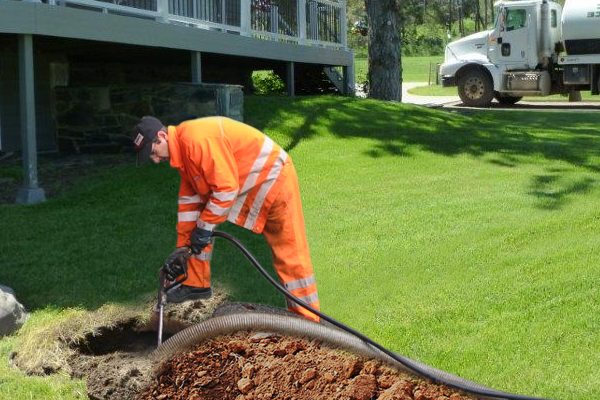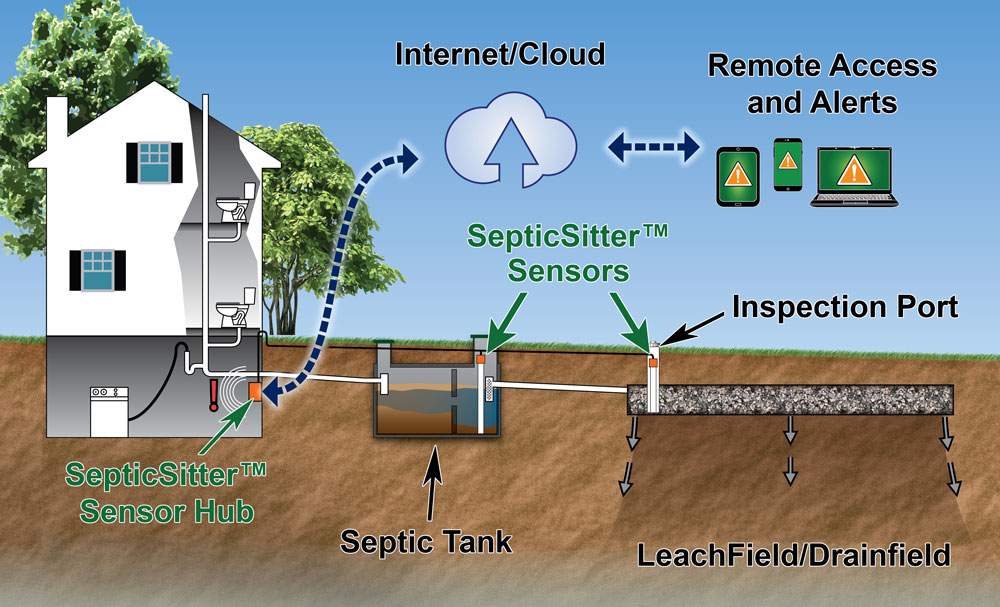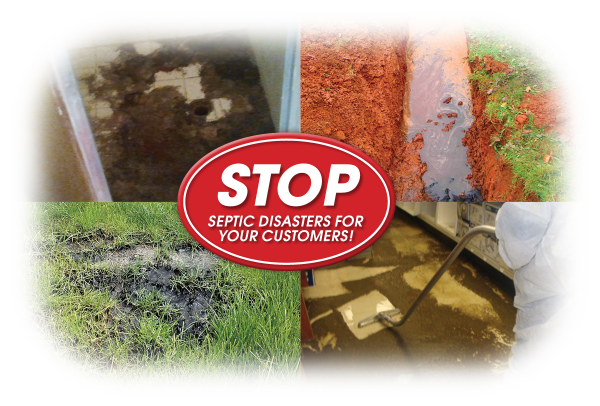In an ideal world, if everything is done perfectly by all parties all the time, onsite sewage systems should perform well and their owners should never have a problem. But alas, we don't live in a perfect world. Sometimes "s**t happens" as they say... (pardon the pun).
Most septic owners have been warned that NOT pumping their tank on a regular basis is the fastest way to doom their septic system to failure. As the septic tank fills up with solids, the effluent water leaving the tank gets dirtier and dirtier and starts to carry solids out with the flow to the drain field. This organic and inert material can clog pipes, drainage stone, and settle out on the bottom of the drain field, accelerating clogging of the infiltrative surface (bottom and side walls of the trenches or bed).
Given the septic industries' focus on regular pumping, its understandable that many owners believe their septic system should provide decades of service, under all conditions, just as long as they get their tank pumped regularly. However, while regular pumping is certainly the single best thing you can do to maintain the health of your septic system, it is not a guarantee of trouble-free septic system ownership.
Onsite sewage treatment and dispersal systems are actually complex biological ecosystems that use naturally occurring micro-organisms (that live in the human gut) to digest and treat sewage. When septic systems get overloaded, either hydraulically (too much water) or organically (too much organic matter in the wastewater) they can back-up or break out on the ground surface. If the microbiology in the septic system gets poisoned by toxins, it can negatively impact treatment performance, or cause the septic system to perform poorly in other ways.
In my 25 years of experience as an engineer who has specialized in the planning and design of residential, commercial and small community sewage systems, I have seen or heard of septic systems malfunctioning or failing due to a huge variety of reasons. Some were related to design or installation problems, some were due to equipment failing or wearing out, some occupant or user related, and some age or weather/climate related. Sometimes it is no one's "fault", and everyone learns something new.
Here is a partial list of just some of the things that can cause an onsite sewage system to malfunction, back-up, break-out on the ground surface or otherwise fail. I've tried to group these under one of four main categories, however, some items could fall under more than one category.
Most septic owners have been warned that NOT pumping their tank on a regular basis is the fastest way to doom their septic system to failure. As the septic tank fills up with solids, the effluent water leaving the tank gets dirtier and dirtier and starts to carry solids out with the flow to the drain field. This organic and inert material can clog pipes, drainage stone, and settle out on the bottom of the drain field, accelerating clogging of the infiltrative surface (bottom and side walls of the trenches or bed).
Given the septic industries' focus on regular pumping, its understandable that many owners believe their septic system should provide decades of service, under all conditions, just as long as they get their tank pumped regularly. However, while regular pumping is certainly the single best thing you can do to maintain the health of your septic system, it is not a guarantee of trouble-free septic system ownership.
Onsite sewage treatment and dispersal systems are actually complex biological ecosystems that use naturally occurring micro-organisms (that live in the human gut) to digest and treat sewage. When septic systems get overloaded, either hydraulically (too much water) or organically (too much organic matter in the wastewater) they can back-up or break out on the ground surface. If the microbiology in the septic system gets poisoned by toxins, it can negatively impact treatment performance, or cause the septic system to perform poorly in other ways.
In my 25 years of experience as an engineer who has specialized in the planning and design of residential, commercial and small community sewage systems, I have seen or heard of septic systems malfunctioning or failing due to a huge variety of reasons. Some were related to design or installation problems, some were due to equipment failing or wearing out, some occupant or user related, and some age or weather/climate related. Sometimes it is no one's "fault", and everyone learns something new.
Here is a partial list of just some of the things that can cause an onsite sewage system to malfunction, back-up, break-out on the ground surface or otherwise fail. I've tried to group these under one of four main categories, however, some items could fall under more than one category.



17 Comments